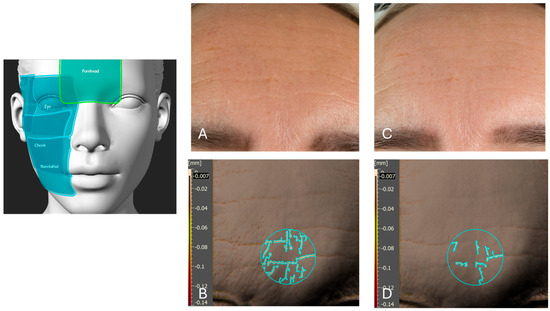Skin aging is a complex biological phenomenon influenced by intrinsic factors (like genetics and cellular decline) and extrinsic factors, among which ultraviolet (UV) radiation-induced photoaging is considered the most significant contributor. Photoaging leads to the production of reactive oxygen species (ROS), accelerating the degradation of functional skin components and resulting in common signs of deterioration, such as fine lines, wrinkles, loss of firmness, and uneven pigmentation.
Historically, retinoids, which are powerful Vitamin A derivatives, have been established as one of the most scientifically proven groups of ingredients for rejuvenating skin. Retinoids work by regulating cell turnover, stimulating keratinocyte proliferation, enhancing collagen synthesis, and strengthening the epidermal barrier. Among the non-prescription options, retinal (retinaldehyde) is highly valued as the strongest and most effective over-the-counter retinoid. It is advantageous because it requires only one enzymatic conversion step to become the highly active retinoic acid, offering greater efficiency and improved tolerability compared to prescription-based options.
However, the efficacy of retinoids in cosmetic products is hampered by their extreme sensitivity to degradation from exposure to heat, light, oxygen, and moisture. To overcome this major challenge of instability and limited bioavailability, this study investigated the performance of a potential solution: a novel, mix-activated anhydrous 0.1% retinal concentrate. This formulation design stabilizes sensitive ingredients, including retinal and ascorbic acid (Vitamin C), and incorporates complementary hydrophilic actives—N-acetyl glucosamine, niacinamide, ascorbic acid, and alpha-glucan oligosaccharide—to enhance efficacy by addressing hydration, barrier function, pigmentation, and the skin microbiome.
Methods
This was a six-week, single-center, prospective, before-and-after study conducted on 27 healthy adults (predominantly female, aged 40–69, Fitzpatrick phototypes II/III) exhibiting visible signs of photoaging. Participants applied the anhydrous 0.1% retinal concentrate, mixed in a 1:2 ratio with an appropriate moisturizer, once daily in the evening, phasing up to nightly use over the first two weeks. Objective measurements of eight skin parameters—including pigmentation, fine lines, wrinkle depth, texture, volume, pores, and redness—were quantitatively assessed at baseline and week six using the Antera 3D imaging system. Statistical analysis utilized the two-tailed paired non-parametric Wilcoxon signed-rank test, with a Bonferroni correction setting the significance threshold at p < 0.006.
Key Findings
Significant improvements were observed across almost all measured objective skin parameters after six weeks of use, without corresponding irritation.
• Fine lines were significantly reduced by 14% (p < 0.0001).
• Hyperpigmentation saw a 12% reduction (p < 0.0001), contributing to a 4% increase in skin brightness (ITA∘, p = 0.0004).
• Wrinkle depth and severity improved by 5% (p = 0.0045).
• Skin surface topography showed notable enhancements, including a 12% improvement in skin texture/smoothness (p < 0.0001) and a 15% reduction in volume irregularities (p < 0.0001).
• Pore visibility was reduced by 24% (p < 0.0001).
• Crucially, no significant change in redness (erythema) was detected (p = 0.6664), suggesting the formulation provided strong anti-aging benefits with good tolerability.
• User satisfaction was high, with 81% of participants expressing overall satisfaction with their skin condition.
• The product demonstrated rapid action, with 40% of participants noticing visible improvements within just two weeks.
For future implication, while the findings are strong, the authors note the need for more rigorous study designs. Future research should employ randomized, placebo- or vehicle-controlled designs to definitively confirm the product-related effects separate from natural variation or placebo responses. Furthermore, to enhance the generalizability of the findings, future studies should include a larger and more diverse population, specifically incorporating individuals with darker skin phototypes (IV, V, or VI) and a better representation of men. The formulation’s successful balance of high efficacy and good tolerability makes it a promising innovation in anti-aging skincare, offering a novel approach to stabilizing potent ingredients.
Link to the study: https://www.mdpi.com/2079-9284/12/6/235

A representative analysis of forehead skin before and after six weeks of product application. Picture (A) presents a visual light image (using a Nikon Z5 camera, Nikon Corporation, Tokyo, Japan) of the forehead at baseline (T0), prior to product application. Picture (B) displays an Antera 3D image of the same forehead region at T0, highlighting the fine lines and skin texture. The value indicated in a black box on the Y-axis is the threshold value used by the software. Picture (C) shows the visual light image of the forehead after six weeks of product application, demonstrating visible improvements. Picture (D) presents the corresponding Antera 3D image after six weeks, illustrating a reduction in fine lines by 37% in the forehead area. The left schematic highlights the analyzed facial regions, including the forehead (highlighted), eye area, cheek, and nasolabial zone.
